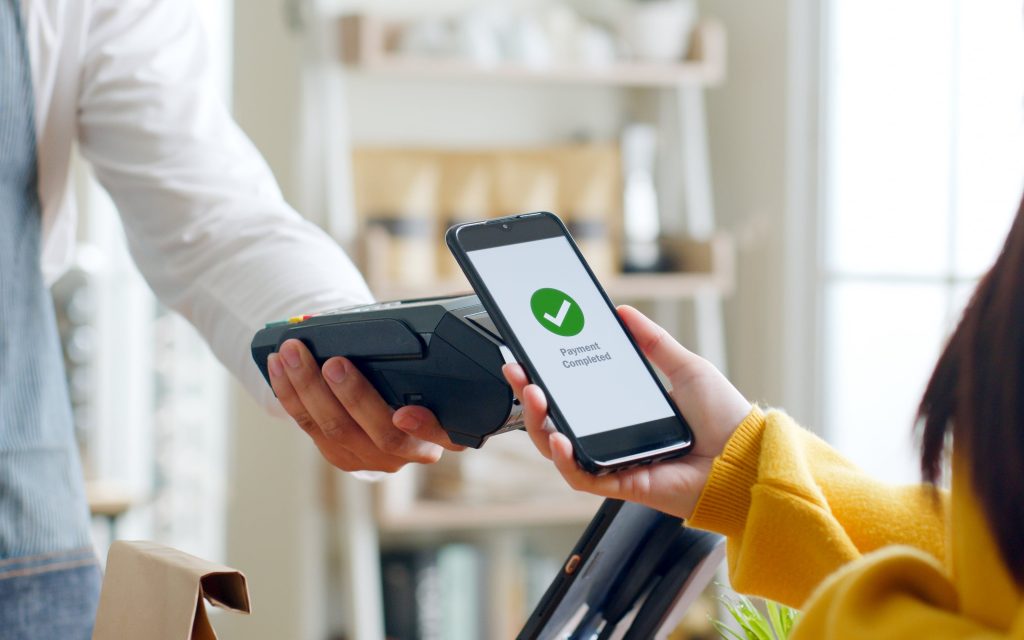Mobile Payment Industry Innovations Driving Online In-Store Sales
 Digital wallets are fast becoming consumers’ preferred way to pay, both in and out of the store. According to industry reports, almost two-thirds of U.S. smartphone users will use a mobile wallet app to transact monthly in 2024, up from half in 2021, ecommercetimes.com reports.
Digital wallets are fast becoming consumers’ preferred way to pay, both in and out of the store. According to industry reports, almost two-thirds of U.S. smartphone users will use a mobile wallet app to transact monthly in 2024, up from half in 2021, ecommercetimes.com reports.
The future of mobile payments also intersects with the rapid growth of blockchain technology and cryptocurrencies. Integrating these technologies into mobile payment systems can revolutionize cross-border transactions, reduce transaction fees, and increase transparency.
Mobile payment options have emerged as a pivotal innovation, especially for e-commerce. They provide convenience, security, and versatility that have transformed how businesses conduct transactions.
However, this process will only continue to work where customers have an easy and safe way to complete their transactions. Unless banks and vendors agree to universal payment solutions, the impetus driving mobile e-commerce payments could fizzle out.
Background of the issue
Two things started the adoption of mobile payments with consumers. One is the lack of physical shopping availability throughout the pandemic. The second was perhaps a lingering dislike for always having to carry cash. Mobile payments solved that issue for many shoppers.
To adapt to changing consumer demands, some physical store retailers jumped on board to get ahead of a potential new curve by installing physical terminals that gave customers more flexibility in how they paid for purchases.
Other hurdles required more involved solutions, such as absorbing the cost of upgrading to newer mobile payment platforms. An even bigger issue was ensuring that whatever systems vendors adopted complied with payment card industry (PCI) requirements.
A big push in transitioning to mobile payment schemes was the opportunity of Buy Now, Pay Later, or BNPL, which sprouted during Covid-19.
Today
As the world becomes increasingly digital, banking, shopping, and other forms of buying access are all becoming integrated into mobile devices. Money watchers predict that digital IDs will represent the majority of presented identity documents within five years.
E-commerce brands are expected to seek effective methods for validating mobile IDs. This effort aims to reduce risks associated with selling age-restricted products and to enhance fraud prevention measures overall.
IDScan’s platform for combatting digital fraud is one way retailers can ensure new mobile payment methods remain safe and secure, with a security protocol that standardizes mobile IDs to enable contactless data transfer.
In today’s e-commerce workflow, consumer identity is being verified at some point during the buying process. A retailer will use an API to query the digital wallet where the ID is held to confirm identity.
Over the last 12 months, better banking support improved point-of-sale (POS) rendering for in-store payment convenience that mimicked the e-commerce trend. Customers also quickly adapted to tap-to-pay with credit cards and mobile wallets.
Mobile point-of-sale (mPOS) is a new option consumers can expect to see in place this year. These additions should get positive responses from both retailers and consumers in terms of better customer experiences.
Convenient for both buyers and sellers, mPOS consists of software and portable hardware that processes the vendor’s transactions, targeting retailers rather than customers. This setup offers both parties convenience, reliability, and speedy store exiting.
The mPOS system calculates sales totals, processes payments, tracks inventory, and collects business data, much like a traditional cash register and some existing payment platforms. Customers should be able to use any tablet, smartphone, or dedicated wireless device as a checkout point.
Scan-free replacement for checkout registers in physical stores was a potentially good idea. However, consumer pushback and mounting revenue losses for vendors from faulty scanning or shopper conniving brought a rapid rethinking of the process.
Both sellers and buyers face problems with the logistics of self-verification, missed product inspections, and a growing distrust or desire to avoid such honor transactions.
A return to human-operated check-out scanning lines is not desirable. The goal of eliminating that process is underway in some big box stores.
The new solution is RFID-based automatic scanning powered by AI-powered sensors. RFID sensors within the cart or overhead enter products shoppers place in their carts.


Latest News